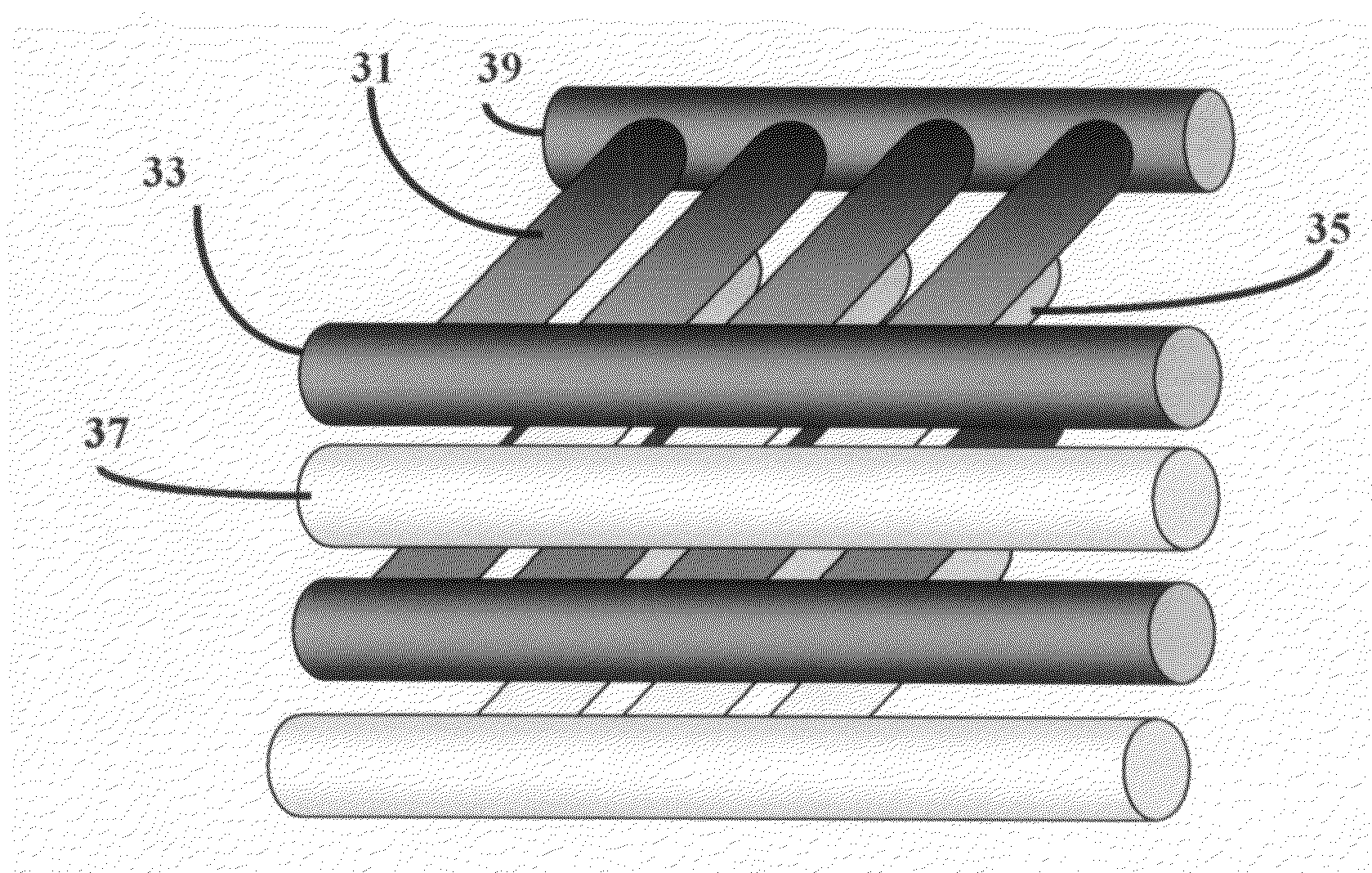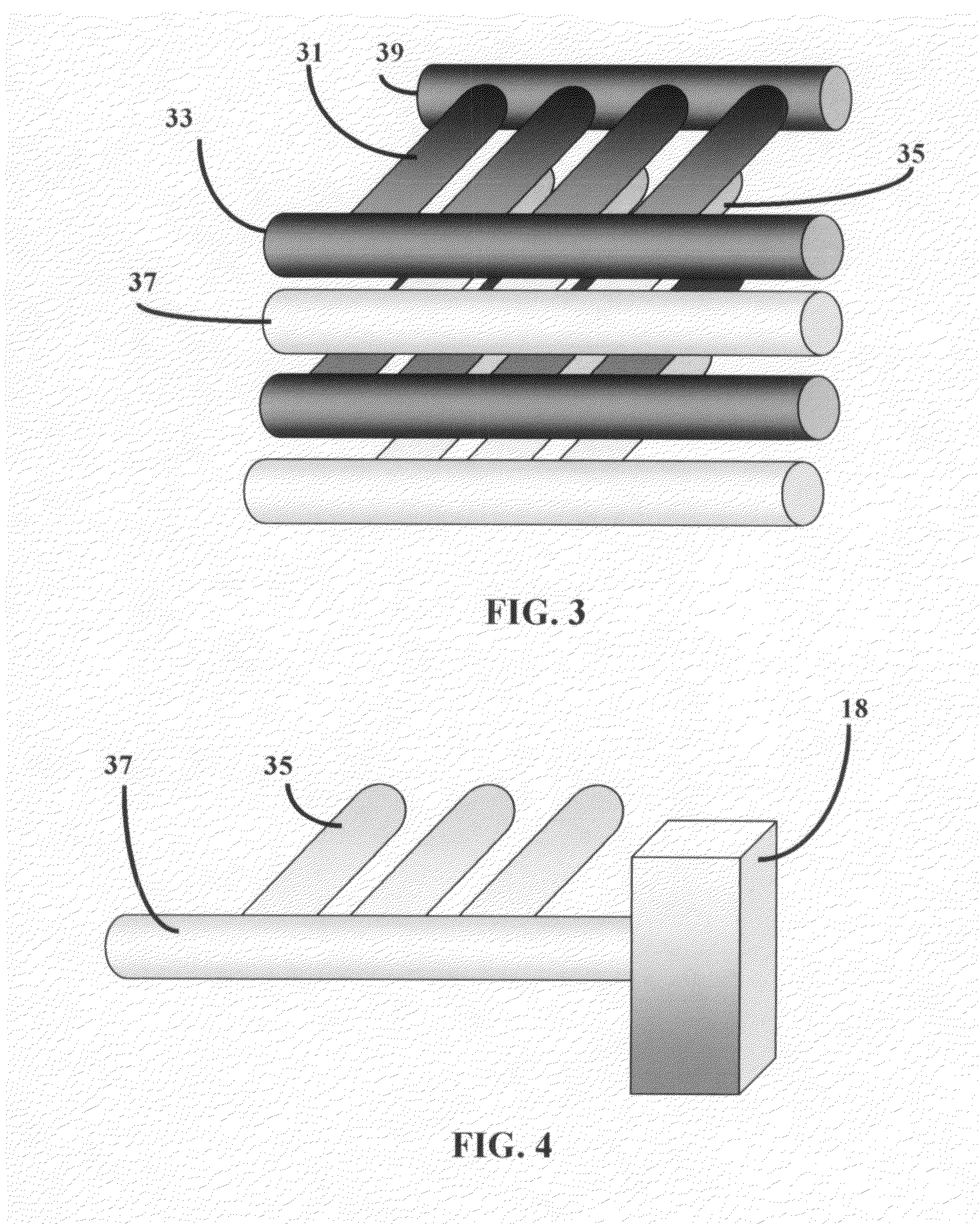Novel fuel cells and methods of manufacturing the same
a fuel cell and fuel technology, applied in the field of fuel cells, can solve the problems of high fuel efficiencies, high cost of membrane materials and catalysts, and high cost of solid oxide fuel cells, and achieve the effects of increasing reaction efficiency, increasing efficiency, and increasing the rate of charged particles (oxygen ions) transport across the solid oxide electroly
- Summary
- Abstract
- Description
- Claims
- Application Information
AI Technical Summary
Benefits of technology
Problems solved by technology
Method used
Image
Examples
Embodiment Construction
[0058]A fuel cell is a device that uses hydrogen (or hydrogen-rich fuel) and oxygen to create electricity. Components of a single fuel cell include two electrodes, which act as porous anode and cathode, each with or without a coating of a catalyst. The need for a catalyst is reduced with increasing reaction temperature. Between the two electrodes there is an electrolyte, through which either protons move toward cathode where they combine with oxygen ions, or negative ions (anions), formed at the cathode travel toward the anode where they combine with hydrogen to generate water and electrons.
[0059]Electrolyte is the key material, as it allows ions to travel through it, but does not permit electrons. Electrons generated from hydrogen molecules travel through a circuit providing external energy. Electrons, in PEFC and PAFC type fuel cells, are generated at the anode along with protons from hydrogen, and return to the cathode completing the circuit. For AFC, MCFC, and SOFC types electro...
PUM
| Property | Measurement | Unit |
|---|---|---|
| temperature | aaaaa | aaaaa |
| temperatures | aaaaa | aaaaa |
| volume | aaaaa | aaaaa |
Abstract
Description
Claims
Application Information
 Login to View More
Login to View More - R&D
- Intellectual Property
- Life Sciences
- Materials
- Tech Scout
- Unparalleled Data Quality
- Higher Quality Content
- 60% Fewer Hallucinations
Browse by: Latest US Patents, China's latest patents, Technical Efficacy Thesaurus, Application Domain, Technology Topic, Popular Technical Reports.
© 2025 PatSnap. All rights reserved.Legal|Privacy policy|Modern Slavery Act Transparency Statement|Sitemap|About US| Contact US: help@patsnap.com



